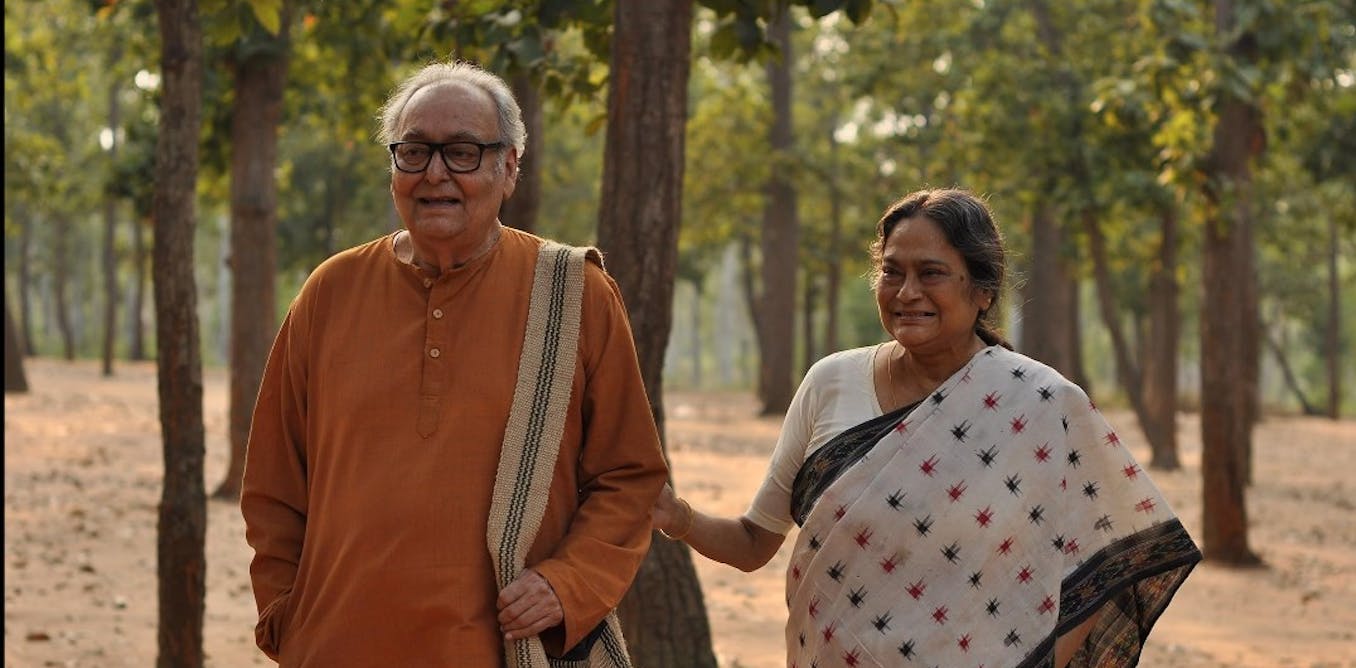Movies can be effective media for spreading health information. Indian cinema, encompassing various regional film industries, holds sway over public perceptions and societal norms.
Movie reviewers and caregiving advocates also note the influence of films on the perception of dementia. Health researchers have also explored dementia in Indian cinema, and highlighted how these films can be a medium to understand cultural issues related to dementia.
Dementia, a complex condition affecting memory, cognitive functions and behaviour, often carries stigma and misunderstanding in many communities, including South Asian communities. Alzheimer’s disease is the most common type of dementia. It involves parts of the brain that control thought, memory and language.
My research focuses on understanding the experiences of people living with dementia and their care partners in Canadian South Asian communities, including their understanding of dementia.
Indian cinema has played an role in raising awareness and promoting empathy surrounding dementia. Yet more nuanced and accurate portrayals could go a long way towards informing the public about what can be expected and avoiding reinforcing stereotypes. Such portrayals could also model best practices to support people living with dementia.
Research and culturally inclusive care
Research underscores the importance of culturally inclusive care for people living with dementia. Studies indicate that cultural beliefs and stigma surrounding dementia can hinder the timely diagnosis and management of dementia.
Indian cinema, with its broad reach, can play a pivotal role in addressing these cultural barriers.
By incorporating accurate and sensitive portrayals of dementia, Indian films can educate the public about early symptoms, treatment options and the importance of supportive care-giving environments.
Realistic, detailed portrayals
Films like Thanmathra, (2005, Malayalam) and Astu, (2013, Marathi) helped bring discussion of Alzheimer’s and dementia into public discourse in South Asian communities. Both these films are notable for their realistic and detailed portrayal of dementia.
Thanmathra, starring Mohanlal, depicts the cognitive decline of Ramesan, a government employee with early-onset Alzheimer’s, and the impact on his family.
Astu follows the life of a Sanskrit scholar with Alzheimer’s disease who leaves home and is taken in by a kind mahout (an elephant caregiver), and his daughter. The film explores the scholar’s life before and during the progression of dementia, highlighting the impact on his family.
These films provide insights into the diagnosis process, early symptoms and emotional and psychological aspects the person living with Alzheimer’s and their family face.
How families manage care
Other films not only highlight important issues surrounding dementia but also raise questions about how audiences may interpret these depictions.
Maine Gandhi Ko Nahin Mara (Hindi, 2005) stars Anupam Kher, as a retired professor living with dementia who begins to believe he is responsible for Gandhi’s death after a childhood trauma surfaces.
The film portrays the initial symptoms and the family’s struggles with his care, and could be understood to allude to evidence that a history of psychological distress can increase the risk of developing Alzheimer’s disease. The ending has a dramatic scene, which might mislead viewers into believing in unrealistic treatments for dementia.
Godhi Banna Sadharana Mykattu (Kannada, 2016), starring Anant Nag, weaves between the present confusion and past life of Venkob Rao, a person living with Alzheimer’s who goes missing from his retirement home. While the film portrays the character in a somewhat idealized manner, it highlights caregivers’ emotional struggles and enriching interactions with the person living with dementia, emphasizing the significance of love, forbearance and understanding in caregiving. Such values align with research advocating for family-centred care models.
Inappropriate care practices
Black (Hindi, 2005), starring Amitabh Bachchan and Rani Mukerji, primarily focuses on the challenges faced by a woman living with visual and auditory impairments and her teacher, who later develops Alzheimer’s disease. The film’s portrayal of dementia includes some accurate depictions of early confusion and disorientation.
However, the overall depiction could be more extensive. Certain elements, such as chaining the character to a bed in a hospital, are highly dramatized and not reflective of appropriate care practices.
Some realistic symptoms, stretched credulity
U Me Aur Hum (Hindi, 2008), starring Ajay Devgn and Kajol, revolves around a young woman who develops early-onset Alzheimer’s disease. The film is notable for showing some realistic symptoms of early-onset dementia, something lesser discussed in society. However, the film quickly veers into melodrama with the narrative suggesting love and determination alone can conquer the condition’s challenges, oversimplifying the complex realities of living with dementia.
Belashuru (Bengali, 2022) focuses on an aging couple whose wife is living with dementia, and the family tries various methods to help her recognize her husband again. The film, starring the late actors Soumitra Chatterjee and Swatilekha Sengupta, depicts some realistic symptoms of the wife’s dementia, including the importance of person-centred care.
However, the portrayal of the wife’s complete dependence on her husband could eclipse the fact that many individuals with dementia lead meaningful lives with varying degrees of independence. The film also stretches credulity with specific plot points.
Strategies for navigating dementia
Smile Please (Marathi, 2019), also tells a story surrounding early-onset dementia, in the character Nandini (Mukta Barve), a young photographer. The film depicts her coping mechanisms and support she receives from family and friends to maintain her quality of life. For example, the doctor starts her on medications to manage her symptoms but clarifies there is no cure.
Nandini starts to attend sessions with her physician where she does puzzles and other cognitive activities to keep herself engaged. However, viewers should note it is unrealistic for a physician to do these; it is often community support organizations that facilitate social, physical and cognitive activities.
Reducing the stigma of dementia
By featuring characters living with dementia, these films help make the condition more relatable and less stigmatized. They may encourage viewers to empathize with people living with dementia and their caregivers, promoting a more compassionate societal attitude.
However, dramatization and romanticization of dementia in some films can reinforce stereotypes, while exaggerated symptoms and dramatic narratives may lead to misconceptions about the everyday realities of living with dementia.
Every individual has a unique journey with dementia, and many individuals with dementia lead meaningful lives with varying degrees of independence. Learning more about dementia, and discussing its popular representation in Indian film, is one way to help bolster culturally inclusive care.

The post “Portraits of dementia in Indian cinema raise important conversations about the condition” by Navjot Gill-Chawla, Doctoral Candidate, Aging, Health and Well-being, University of Waterloo was published on 07/28/2024 by theconversation.com



































Leave a Reply